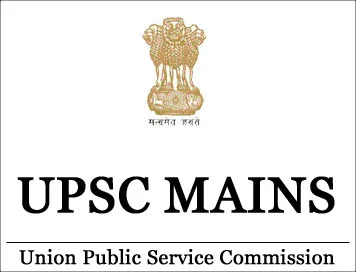(Download) UPSC IAS Mains General Studies (Paper - II) Exam Question Paper - 2014
Exam Name: UPSC IAS Mains Exam
Year: 2014
Subject: Paper-III: General Studies -II (Governance, Constitution, Polity, Social Justice and International relations)
Time Allowed: 3 Hours
File Type: PDF
Total Marks : 12½×20 = 250
Instructions: Answer the following questions in not more than 200 words each. Contents of the answers are more important than their length. All questions carry equal marks.
Q1. Starting from inventing the ‘basic structure’ doctrine, the judiciary has played a highly proactive role in ensuring that India develops into a thriving democracy. In light of the statement, evaluate the role played by judicial activism in achieving the ideals of democracy.
Q2. Though the federal principal is dominant in our constitution and that principle is one of its basic features, but it is equally true that federalism under the Indian Constitution leans in favour of a strong Center, a feature that militates against the concept of strong federalism. Discuss.
Q3. The ‘Powers, Privileges and Immunities of Parliament and its Members’ as envisaged in Article 105 of the Constitution leave room for a large number of un-codified and un-enumerated privileges to continue. Assess the reasons for the absence of legal codification of the ‘parliamentary privileges’. How can this problem be addressed?
Q4. What do you understand by the concept “freedom of speech and expression”? Does it cover hate speech also? Why do the films in India stand on a slightly different plane from other forms of expression? Discuss.
Q5. Instances of President’s delay in commuting death sentences has come under public debate as denial of justice. Should there be a time limit specified for the President to accept/reject such petitions ? Analyse.
Q6. The size of the cabinet should be as big as governmental work justifies and as big as the Prime Minister can manage as a team. How far is the efficacy of a government then inversely related to the size of the cabinet? Discuss.
Q7. Though 100 percent FDI is already allowed in non-news media like a trade publication and general entertainment channel, the Government is mulling over the proposal for increased FDI in news media for quite some time. What difference would an increase in FDI make? Critically evaluate the pros and cons.
Q8. The setting up of a Rail Tarif Authority to regulate fares will subject the cash strapped Indian Railways to demand subsidy for obligation to operate nonprofitable routes and services. Taking into account the experience in the power sector, discuss if the proposed reform is expected to benefit the consumers, the Indian Railways or the private container operators.
Q9. National Human Rights Commission (NIIRC) in India can be most effective when its tasks are adequately supported by other mechanisms that ensure the accountability of a government. In light of the above observation assess the role of NHRC as an effective complement to the judiciary and the judiciary and other institutions. In promoting and protecting human rights standards.
Q10. The penetration of Self-Help Groups (SHGs) in rural areas in promoting participation in development programmes is facing sociocultural hurdles. Examine.
Q11. Do government’s schemes for up-lifting vulnerable and backward communities by protecting required social resources for them, lead to their exclusion in establishing businesses in urban economies?
Q12. An athete participates in Olympics for personal triumph and nation’s glory; victors are showered with cash incentives by various agencles, on their return. Discuss the merit of state sponsored talent hunt and its cultivation as against the rationale of a reward mechanism as encouragement.
Q13. Should the premier institutes like IITs/ IIMs be allowed to retain premier status, allowed more academic independence in designing course and also decide mode/ criteria of selection of students. Discuss in light of the growing challenges.
Q14. Has the Cadre based Civil Services organzation been the cause of slow change in India? Critically examine.
Q15. Two parallel run schemes of the Government, viz the Adhaar Card and NPR, one as voluntary and the other as compulsory, have led to debates at national levels and also litigations. On merits, discuss whether or not both schemes need run concurrently. Analyse the potential of the schemes to achieve developmental benefits and equitable growth.
Q16. With respect to the South China sea, maritime territorial disputes and rising tension affirm the need for safeguarding maritime security to ensure freedom of navigation and over flight throughout the region. In this context, discuss the bilateral issues between India and China.
Q17. The aim of Information Technology Agreements (ITAs) is to lawer all taxes and tariffs on information technology products by signatories to zero. What impact would such agreements have on India’s interests?
Q18. Some of the International funding agencies have special terms for economic participation stipulating a substantial component of the aid to be used for sourcing equipment from the\ leading countries. Discuss on merits of such terms and if there exists a strong case not to accept such conditions in the India context.
Q19. India has recently signed to become founding member of New Development Bank (NDB) and also the Asian Infrastructure Bank (AIIB). How will the role of the two Banks be different? Discuss the strategic significance of these two Banks for India.
Q20. WTO is an important international institution where decisions taken affect countries in a profound manner. What is the mandate of WTO and how binding are their decisions? Critically analyse India’s stand on the latest round of talks on Food security.
Click Here to Download Full Paper
हिंदी माध्यम में यूपीएससी आईएएस (मुख्य परीक्षा) के 5 वर्षों के प्रश्न पत्र डाउनलोड करने के लिए यहाँ क्लिक करें
<< Go Back to Main Page
Courtesy: UPSC







